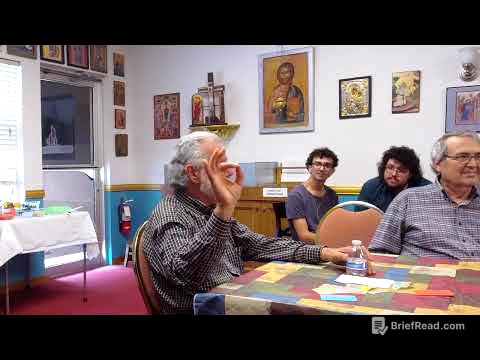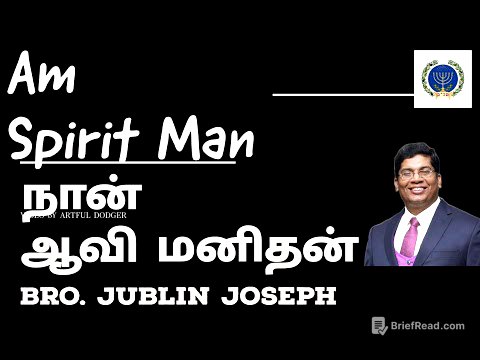TLDR;
This video recounts the final days and execution of Jose Rizal, a Filipino national hero. It covers his trial, defense, conviction, and ultimate sacrifice, highlighting his innocence, love for his country, and the injustice he faced. The video emphasizes Rizal's commitment to education and peaceful reform, portraying him as a symbol of hope and resistance against oppression.
- Rizal's trial and unjust conviction
- His unwavering love for the Philippines
- His commitment to education and peaceful reform
- His final moments and execution as a symbol of hope
Opening Scene [0:00]
The video opens by describing Jose Rizal as a Filipino who lived during a time of colonial oppression. He witnessed the cruelty of the colonizers and was driven by good intentions to change the situation. Rizal pursued education, commitment, and faith, using his works to inspire awareness and hope. He ultimately died fighting for his country, leaving behind a legacy of self-worth and education. The video promises to show Rizal's final moments and how he impacted the Philippines.
The Trial [1:12]
Rizal is portrayed in a courtroom setting, denying accusations against him. He asserts that serving his country brings him joy, contrasting it with the lavish lives of his accusers. Despite being presented with letters from figures like Antonio Luna and Mariano Ponce linking him to Philippine reform movements, Rizal denies any affiliation with rebellious activities, maintaining that his intentions were to free the Philippines from oppression.
Judge Advocate [3:54]
A judge advocate is appointed to Rizal's case, with instructions not to restrain himself. Despite personal opinions that Rizal is innocent and driven by patriotic reasons to free slaves from Spanish rule, the judge believes in objectivity regardless of who stands before him. He is given Rizal's case file to review.
Defense Lawyers [4:51]
The discussion revolves around providing Rizal with a lawyer. The decision is made to assign an army officer, specifically one from the first and second lieutenancy in the Spanish army, as his defender. There's doubt about the fairness of the proceedings and the handling of the case.
Accusations [6:11]
Rizal is accused of being the principal organizer and the living soul of the Filipino insurrection. He is also accused of founding a society and writing books that promote rebellion. Rizal expresses his confusion, questioning how he could be charged with rebellion.
Christmas in Jail [8:19]
The video describes Rizal's Christmas in jail on December 25, 1892, as a sad and lonely experience. He spends the holiday alone in a small cell, contemplating his impending death. He reflects on the contrast between his current situation and the Christmases he spent with family and friends, highlighting his status as a framed revolutionist awaiting execution.
Prosecution [9:33]
The prosecutor argues that Rizal owes his education to Spanish institutions but has become a principal figure in inciting rebellion. They cite Rizal's annotations to Morga's history and his studies from abroad as evidence of his intent to incite hatred against religious orders. The prosecution claims Rizal is a perpetrator of rebellion, masking himself as a hero while driving his people towards structural change and must face the death penalty.
Defense [11:01]
The defense argues that Rizal's name has become a symbol of revolution, but his presence is seen as a threat that causes disarray between Spain and the Philippines. They question whether Rizal has turned his back on Spain or hates his motherland to the point of destroying the country. The defense emphasizes that Rizal's literary works, though controversial, advocate for Philippine rights and that he gained respect through his skills and good intentions. They highlight that Rizal rejected involvement in the revolution during his exile in Dapitan, suggesting that judging him fairly is impossible.
Rizal's Statement [14:29]
Rizal states that he has not been involved in politics since July 6, 1892, until June 1, when Dr. Valenzuela informed him about the uprising, proving he had no prior contact with the revolutionists. He argues that his name was exploited without his knowledge and that he refused to escape from Dapitan, despite opportunities to do so. Rizal reiterates that he does not favor obtaining freedom through destructive means, but through education, desiring liberty for the Philippines.
Verdict [16:58]
The court finds Rizal guilty and condemns him to death.
Farewell [17:56]
Rizal spends a grueling and exhausting day, both physically and emotionally. He sees familiar and unfamiliar faces, and some who wish they had valued their time with him more. He is visited by his beloved.
Letter to his Brother [18:53]
Rizal writes a letter to his brother Ferdinand Blumentritt, stating that he will be executed the next day but is innocent of rebellion. He says he will die with a clear conscience and asks for forgiveness for the pain he caused his family. He encourages his family to live in peace and harmony, treat their parents well, and remember him fondly.
Execution [22:17]
Rizal marches to his execution, remaining composed and facing forward, ready to sacrifice himself for his country. He bids farewell to those present, including his defender and brother. Despite his tired arms, he firmly clasps the hands of his friends. A priest blesses him and offers a crucifix. At exactly 7:03 in the morning, Rizal is executed at the age of 35 years, five months, and 11 days.









